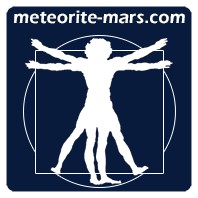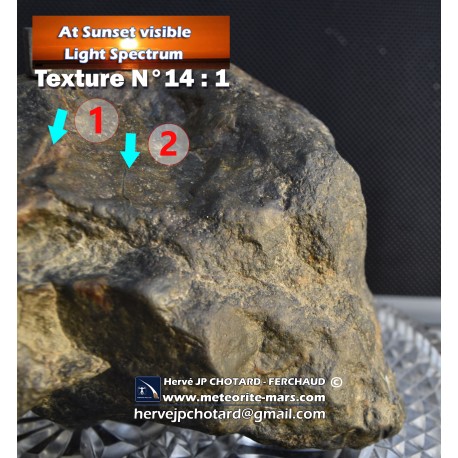Texture 14-2
Mechanical abrasion (corrasion) caused by continual attack OF Picture14/02 cub indique epaisseur de plus de 3 mm de fresh crust de fusion very hight température !! celà indique un long parcours dans l 'atmosphére terrestre sur plus de de 18 témoins in the night 18h45 november 05 year 2012 700 kms !!! véry rare !!
Oriented Meteorites
examples of various oriented (or orientated) meteorites from the Meteorites Australia Collection. There are three views of each meteorite starting with the Trailing Side (Rear) on the left, the Leading Side (Front) in the centre and a side view on the right-hand column.
IF THE meteor travels through the Earth's atmosphere, the heat generated ablates material away. If the meteor is able to achieve stable flight rather than tumbling sporadically, then the material will ablate in an even manner creating what is known as a shield or nose-cone shape. In fact, ideas for space re-entry vehicles were designed from this natural shape which tends to dissipate the high amounts of energy better. The leading side (front) and sides often have flow-lines in the surface which indicates the direction the material was being ablated. The rear edges of the trailing side can create a 'roll-over' rim or 'lip' where the ablating/melting material has started to roll-over onto the back side. Sometimes specimens will also have 'frothing' on the trailing side where the crust has literally bubbled. This is evident in the Gao-Guenie pieces below. Oriented meteorites are quite rare and can differ widely in shape and size but perfectly shaped specimens such as the 277g Australian Iron are extremely rare!
| 
various oriented (or orientated) meteorites from the Meteorites Australia Collection. three views of each meteorite starting with the Trailing Side (Rear) on the left, the Leading Side (Front) in the centre and a side view on the right-hand column.a meteor travels through the Earth's atmosphere, the heat generated ablates material away. the meteor is able to achieve stable flight rather than tumbling sporadically, then the material will ablate in an even manner creating what is known as a shield or nose-cone shape. In fact, ideas for space re-entry vehicles were designed from this natural shape which tends to dissipate the high amounts of energy better. The leading side (front) and sides often have flow-lines in the surface which indicates the direction the material was being ablated. The rear edges of the trailing side can create a 'roll-over' rim or 'lip' where the ablating/melting material has started to roll-over onto the back side. Sometimes specimens will also have 'frothing' on the trailing side where the crust has literally bubbled. This is evident in the Gao-Guenie pieces below. Oriented meteorites are quite rare and can differ widely in shape and size but perfectly shaped specimens such as the 277g Australian Iron are extremely rare!
|










